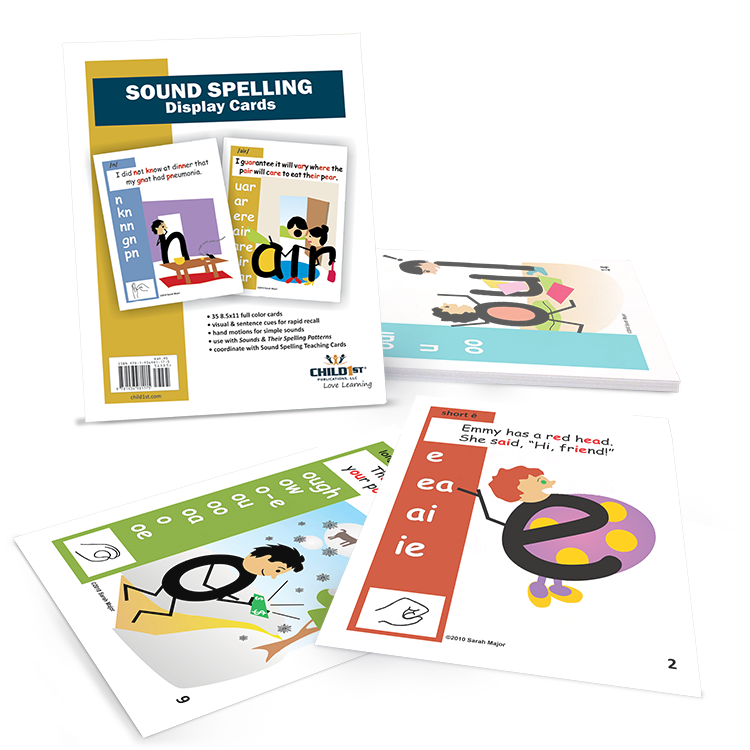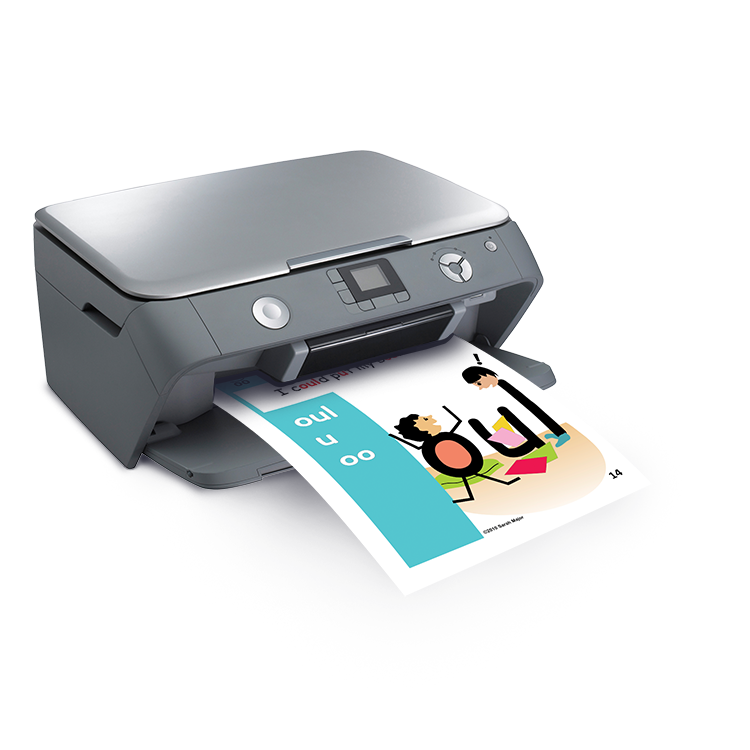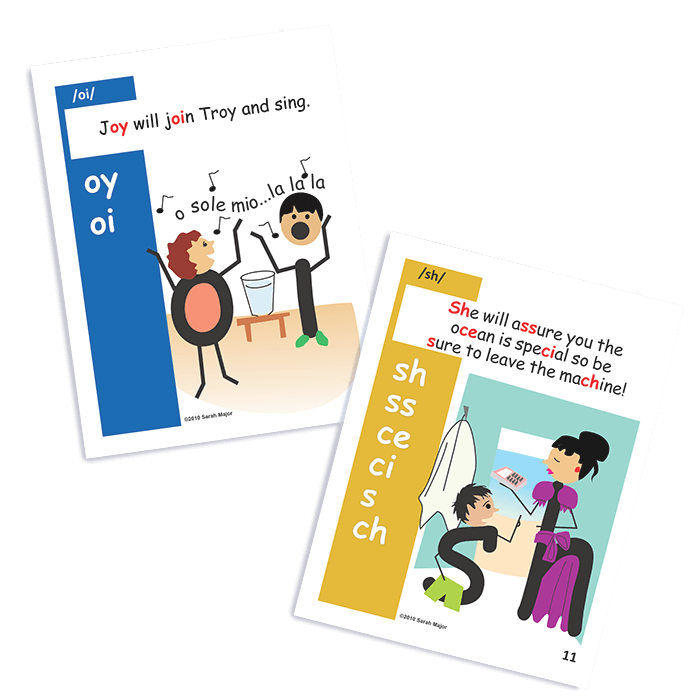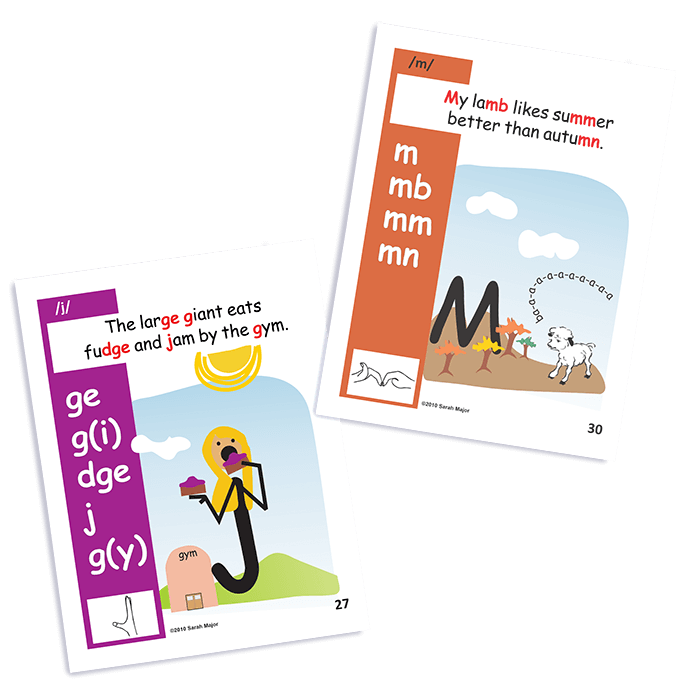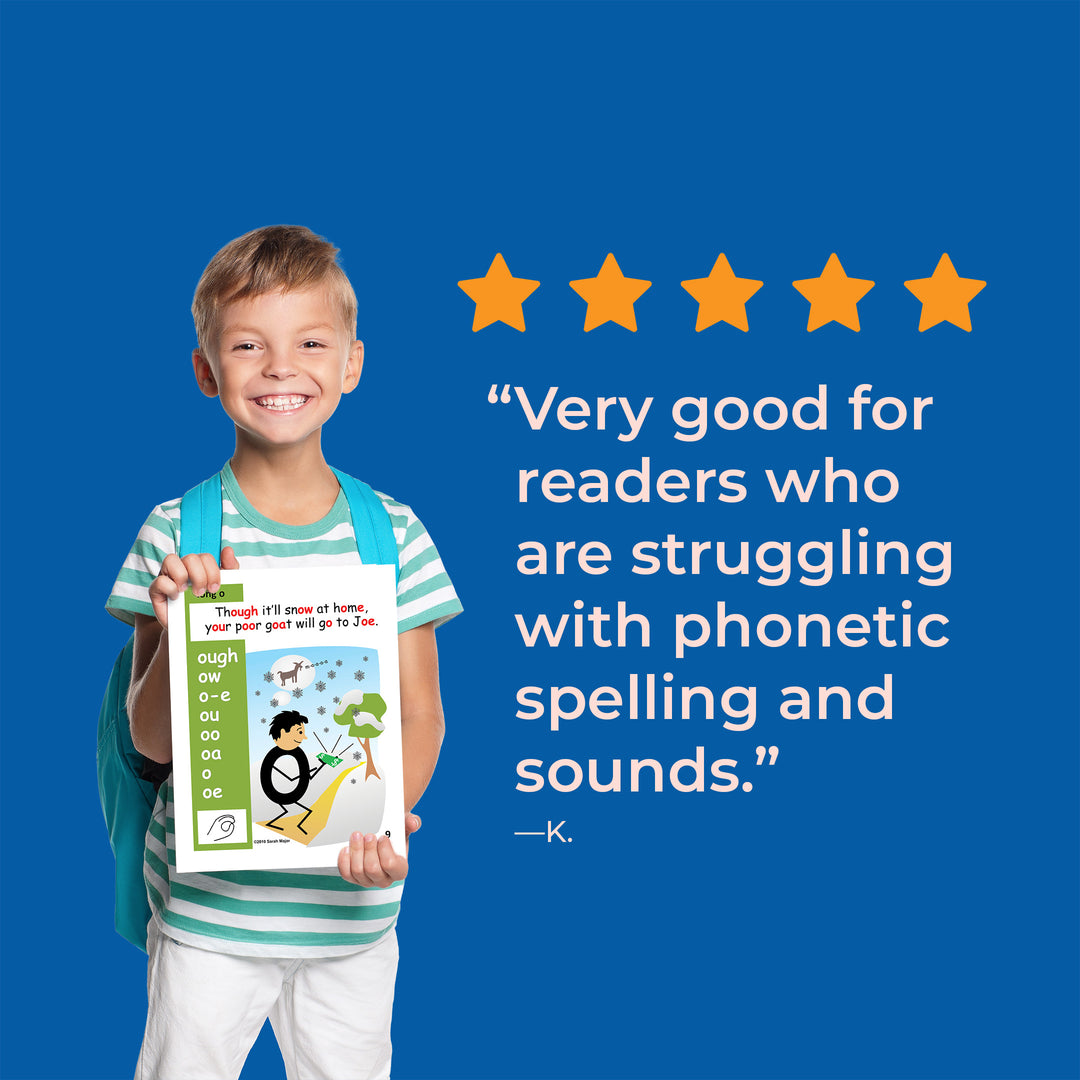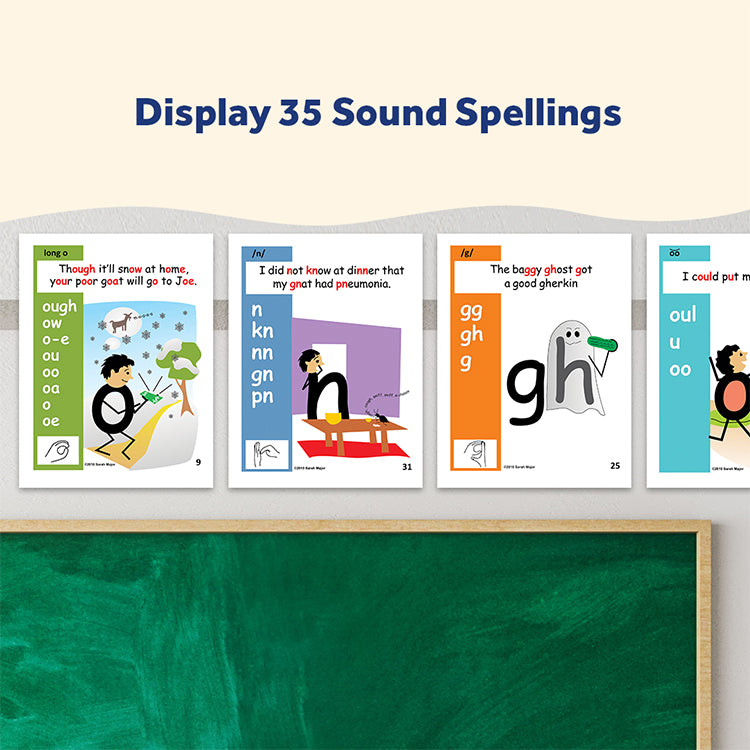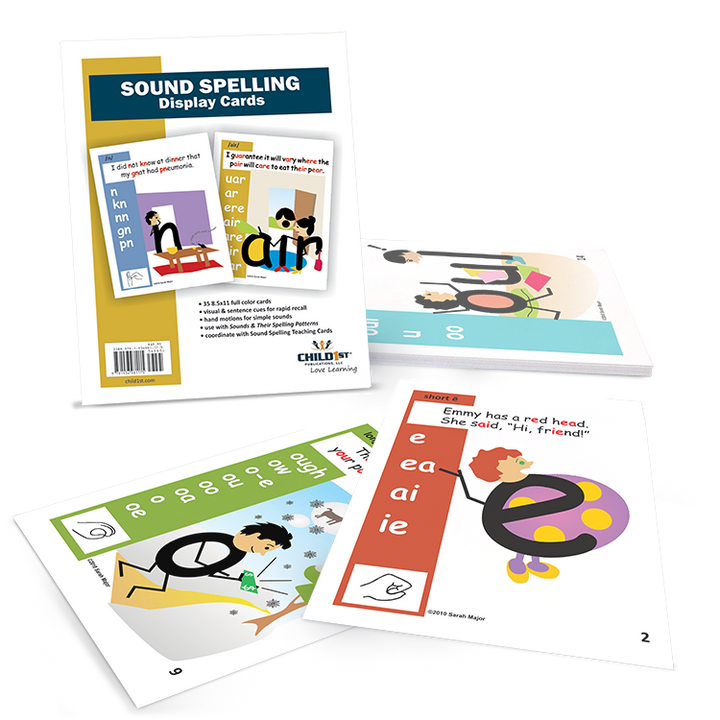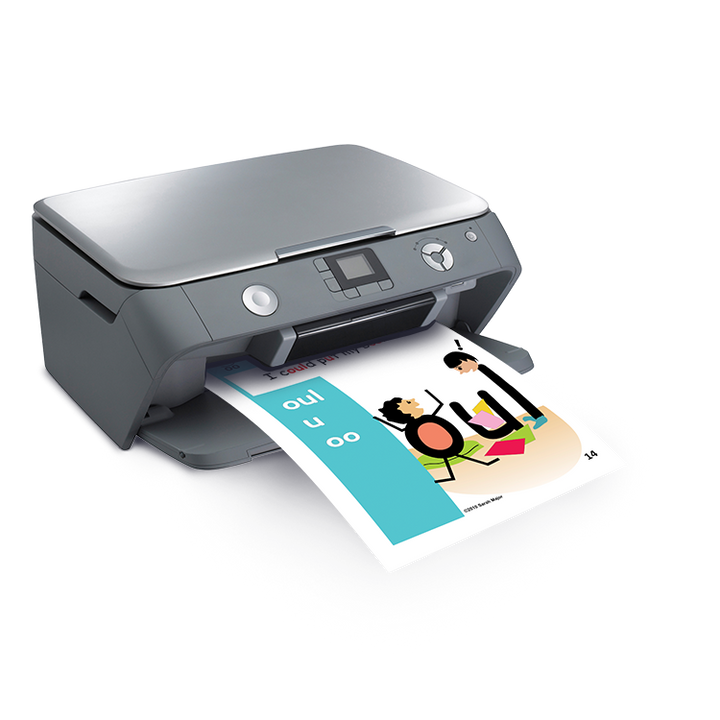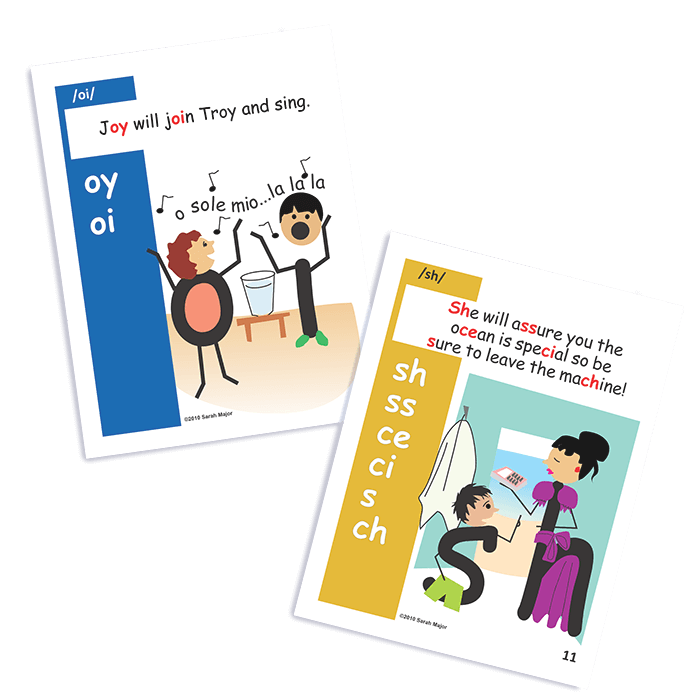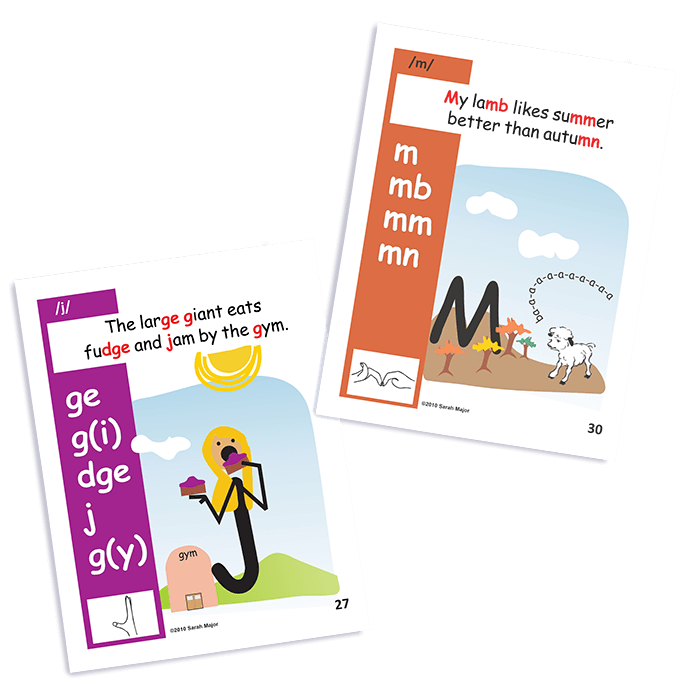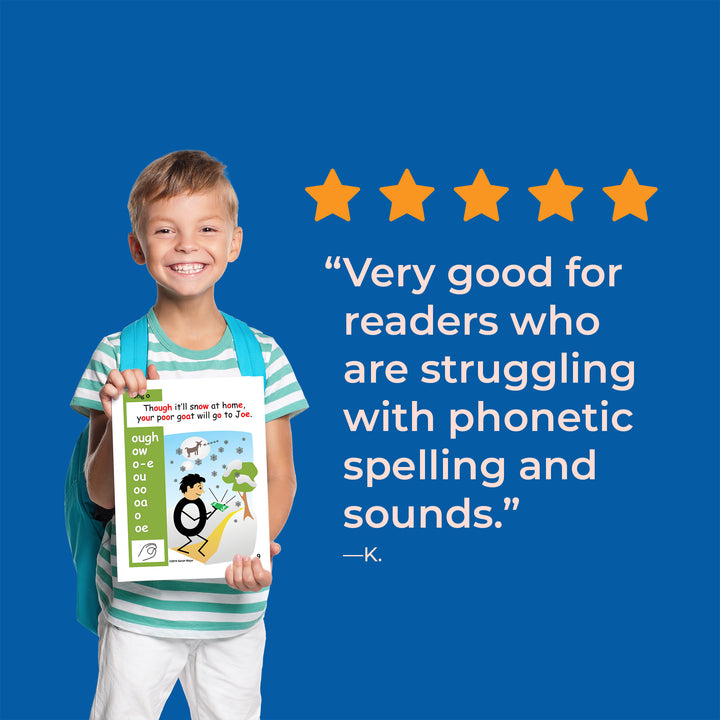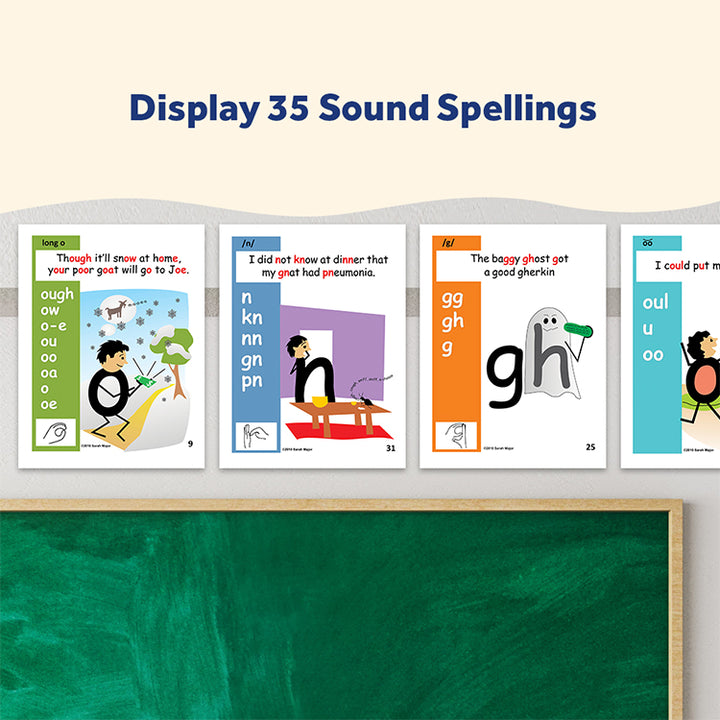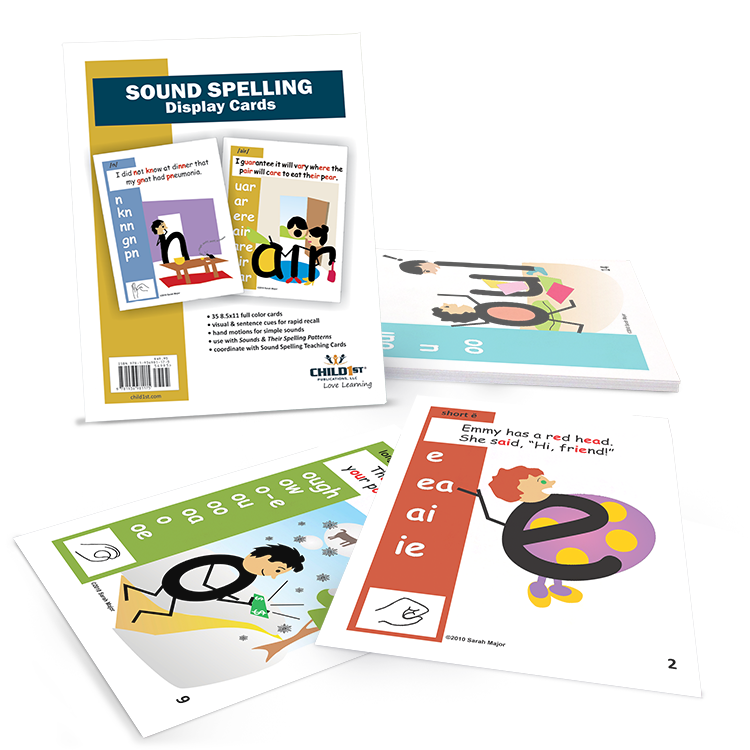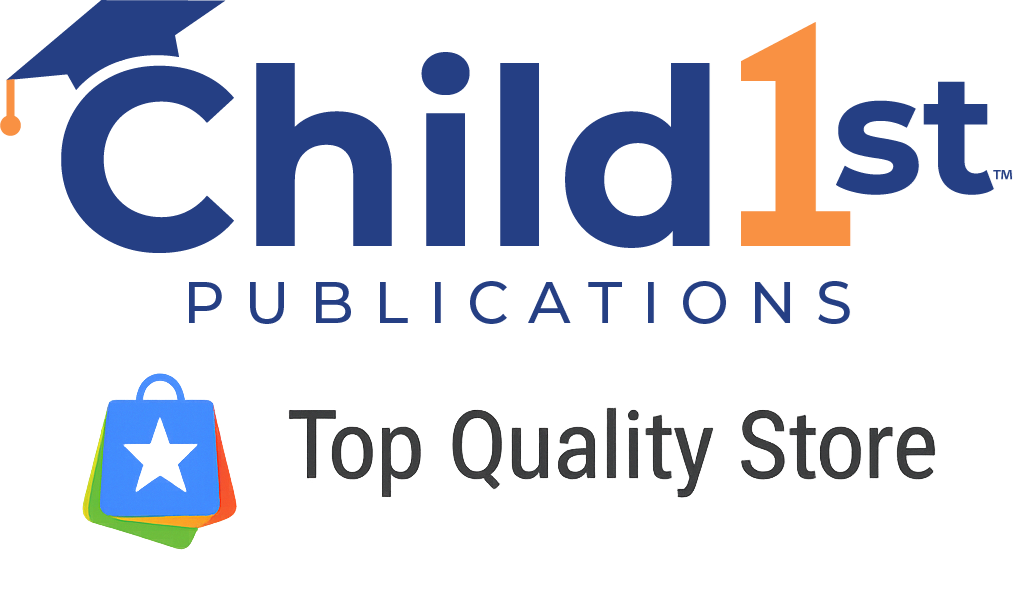Immerse your students in the vibrant world of literacy with our Sound Spelling Display Cards! Each card is a visual feast, spotlighting a specific sound and offering a comprehensive view of all its spellings. With colorful illustrations reinforcing the sentence, these cards transform phonics and spelling into a captivating journey, ensuring rapid recall and spelling mastery. Ignite the joy of learning with this visual and auditory symphony of sounds and spellings!
How it works:
Display the Sound Spelling Display Cards in your student's learning space. Each card focuses on a specific sound, presenting a global view of all the ways to spell that sound. The top of each card features a sentence composed of words representing each spelling of the target sound. On the left side, a list details all the ways the sound is spelled, as well as hand motions for single sounds. The colorful illustration reinforces the sentence visually, lending to rapid recall.
*Single letter sounds and W, V, P, B, and D are not included, as Right-Brained Phonics & Spelling focuses on blends of two or more letters. For single letter sounds, please see our Alphabet Collection.
What’s Included
· 35 Full-Color Sound Spelling Display Cards



